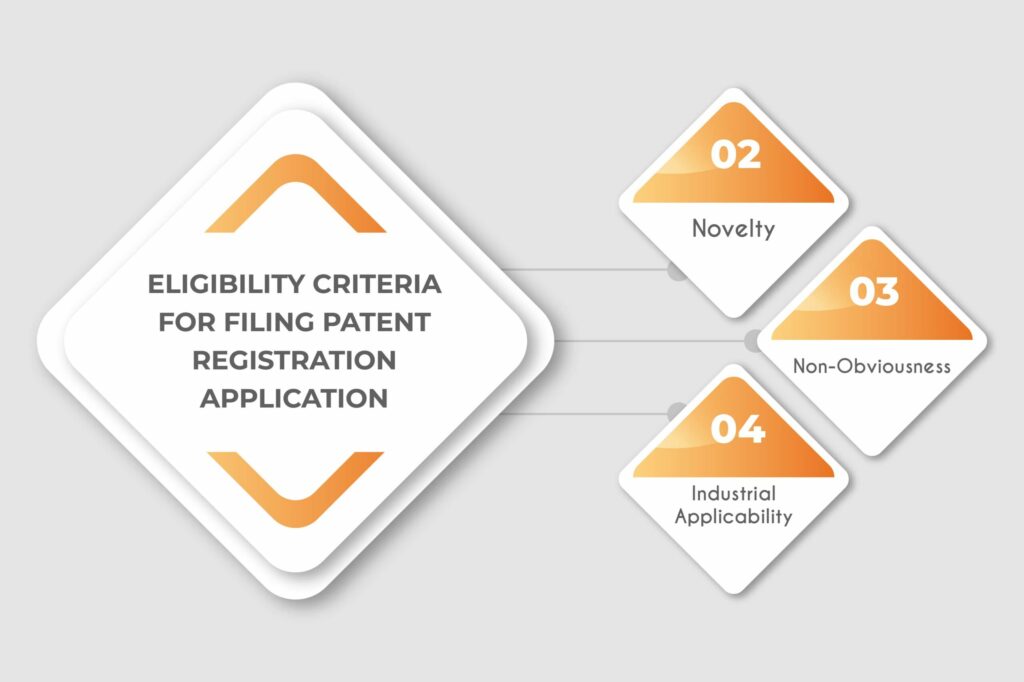What Is Patent and What Are the Criteria of Patent?

A patent is an exclusive right granted for an invention, which provides a new approach or new technology helping to make life and work easier. The proprietor of the patent has the exclusive right to prevent others from commercially exploiting the patented invention. In other words, patent protection means that the innovation cannot, without the agreement of the patent proprietor, be manufactured commercially, used, disseminated, imported or sold by others.
The rights related to patent are “territorial” in nature that is the exclusive rights are only pertinent to the country or region where the patent has been filed or granted.
However, there is no specific list related to what can be patented but Sections 3 and 4 of the Indian Patents Act, 1970 specifically state exclusions to what can be patented in India. Section 3 talks about what are not inventions whereas, Section 4 talks about Inventions relating to atomic energy not patentable.
The statue does not provide any particular list as to what can be patented but there are certain criteria’s that are necessary for patentability of an invention. The patentability of an invention depends on factors like: Patentable Subject Matter, Novelty, Inventive Step or Non- Obviousness and Industrial Applicability.
- Patentable Subject Matter: The first step is to determine whether the invention relates to patentable subject matter or not. If the patentable subject matter does not fall under Section 3 or Section 4 of the Patents Act, 1970, it means that it can be patented subject depending on the other criteria’s.
- Novelty: In establishing the patentability of the invention, novelty is an essential criteria. Section 2(1) (l) of the Patent Act defines “New Invention” as any invention or technology which has not been anticipated by publication in any document or used in the country or elsewhere in the world before the date of filing of patent application with complete specification, i.e., the subject matter has not fallen in public domain or that it does not form part of the state of the art”.
In layman’s language Novelty means the “newness” in the invention that is, it should be unknown or unused in the public domain. This element of an invention would give its owner/ inventor a competitive benefit over other counter parts.
- Non- Obviousness or Inventive Step: This criteria of getting a patent is reflected as a general patentability requirement. The term “inventive step” is defined under Section 2(1) (ja) of the Patents Act as “a feature of an invention that involves technical advance as compared to the existing knowledge or having economic significance or both and that makes the invention not obvious to a person skilled in the art”. This means that the invention must not be obvious to a person skilled in the same field as the invention relates to. It must be inventive and not obvious to a person skilled in the same field.
Further, a claimed invention is considered to involve an inventive step if, it has prior art i.e.it is not obvious to a person skilled in the art. A person skilled in the art refer to a person having ordinary skills, who is aware of the common/ general knowledge. If the invention does not has Non- Obviousness or Inventive Step it would not meet the criteria of patent.
- Capable of Industrial Application: The Patent Act under Section 2 (1) (ac) defines “Industrial Applicability” as “the invention is capable of being made or used in an industry”. This essentially means that the invention cannot exist in abstract. It must be capable of being applied in any industry, which means that the invention must have practical utility in order to be patentable.
If the invention is capable of being used in at least one industry, it is deemed to be capable of Industrial Application. Uncertain, ambiguous, futuristic or unspecific applications are not acceptable. The element of having an industrial application helps the patent owner to gain commercial value out of its invention.
Hence, these are the criteria’s of patents. If all these criteria’s are satisfied the invention is patentable under the Patents Act. These requirements are not water tight compartments, but are essential criteria’s for get a patent granted. The grant of this Intellectual Property helps the inventor to get commercial value as well as a new invention would add significance to the economy.